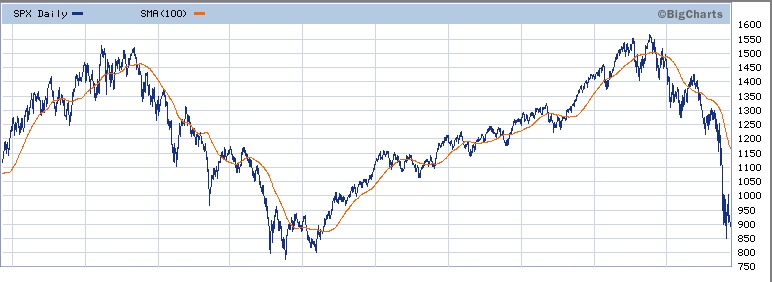Of the Treasury’s long-awaited non-plan bank plan, Andy Kessler writes, “Mr. Geithner should instead use his ‘stress test’ and nationalize the dead banks via the FDIC — but only for a day or so.”
Then,
strip out all the toxic assets and put them into a holding tank inside the Treasury. . . . inject $300 billion in fresh equity for both Citi and Bank of America. Create 10 billion new shares of each of the companies to replace the old ones. The book value of each share could be $30. Very quickly, a new board of directors should be created and a new management team hired. Here’s the tricky part: Who owns the shares? Politics will kill a nationalized bank. So spin them out immediately.
Some $6 trillion in income taxes were paid by individuals in 2006, 2007 and 2008. On a pro-forma basis, send out those 10 billion shares of each bank to taxpayers. They paid for the recapitalization.
Each taxpayer would get about $100 worth of stock for each $1,000 of taxes paid. Of course, each taxpayer has the ability to sell these shares on the open market, maybe at $40, maybe $20, maybe $80. It depends on management, their vision, how much additional capital they are willing to raise, the dividend they declare, etc. Meanwhile, the toxic assets sitting inside the Treasury will have residual value and the proceeds from their eventual sale, I believe, will more than offset the capital injected. That would benefit all citizens, not the managements and shareholders who blew up the banking system in the first place.
Is Kessler crazy? Well, maybe. In his own creative and boisterous way. But not nearly so crazy as Washington’s fumble-bumble these last few months. I’d much prefer Kessler’s out-of-the-box plan to D.C.’s muddle.
What becomes clearer every day is that all the government’s efforts, from the AIG “bailout” to TARP 1.0 and TARP 2.0 onward, have essentially been efforts to get around the terribly destructive interaction of “mark-to-market” accounting and regulatory capital requirements. A few keen observers — David Malpass (I), Brian Wesbury (I, II, III, IV), Steve Forbes (I, II) — have made this point from the start. But the government and most economists clung stubbornly to “fair value” in an apparent attempt not to “let the banks off the hook.”
But what a time for an attack of conscience, a principled stand for supposed accounting purity! We’ll spend trillions and totally alter the nation’s financial landscape, but a minor (though powerful and free!) accounting change — relaxing mark-to-market — is a bridge too far? Explain that one. (more…)


